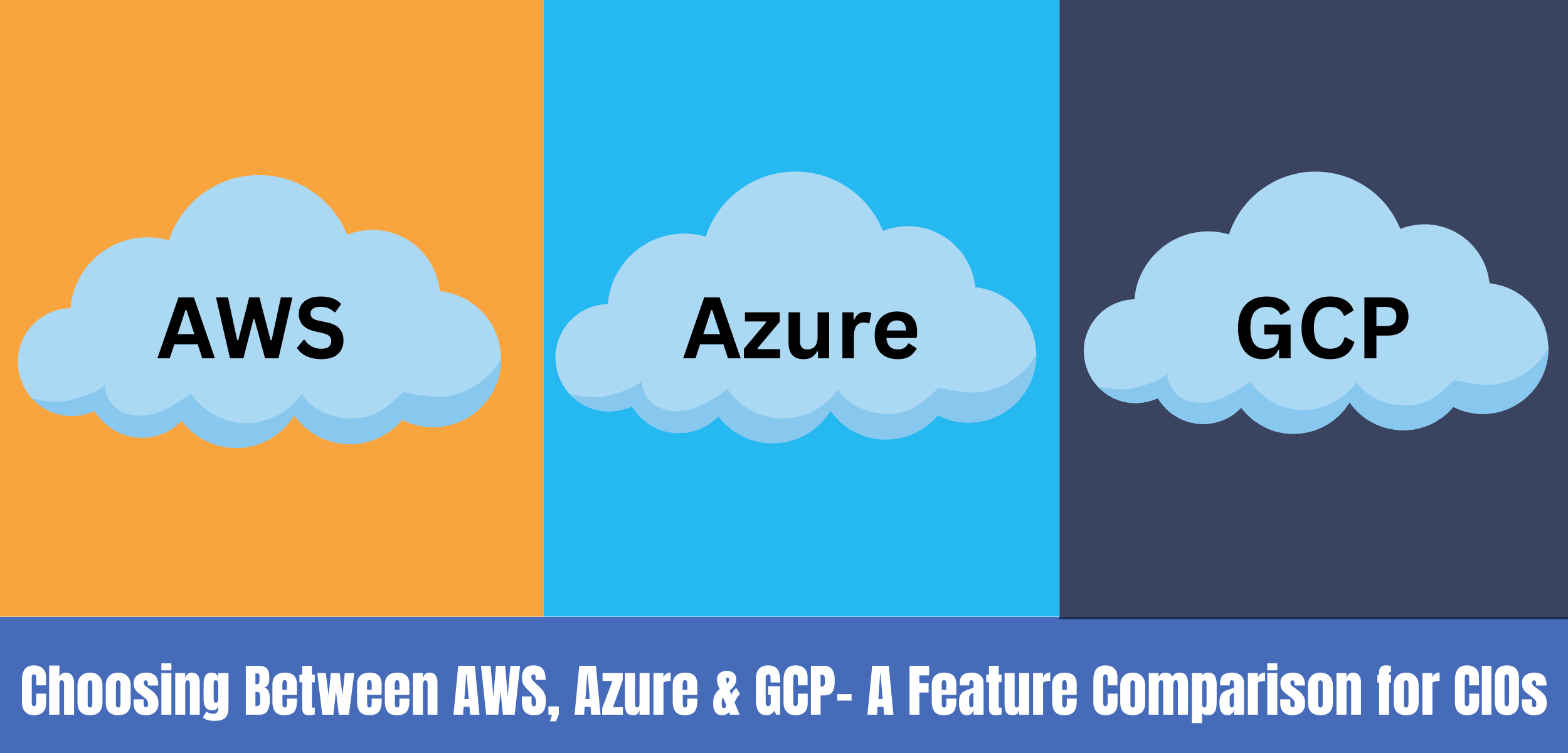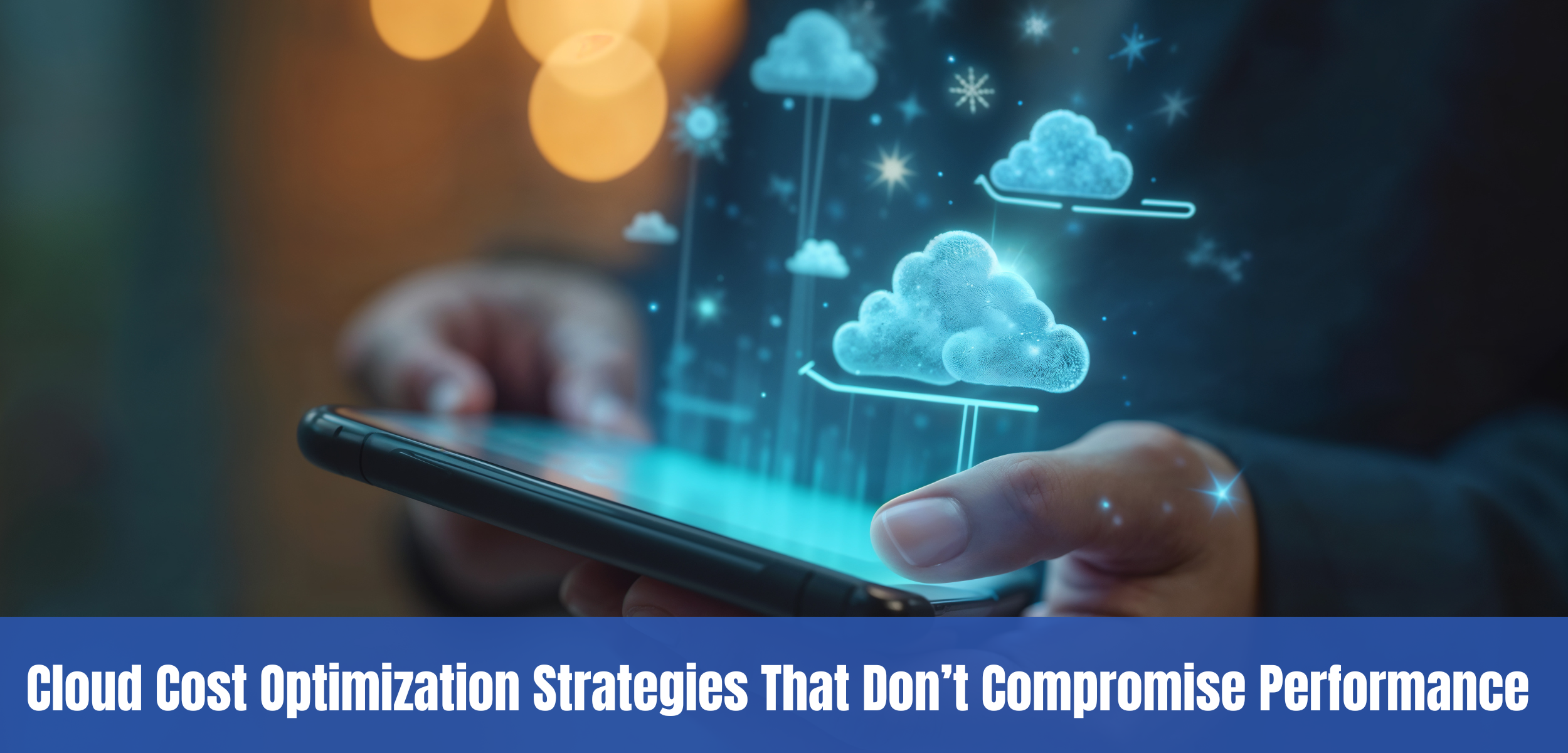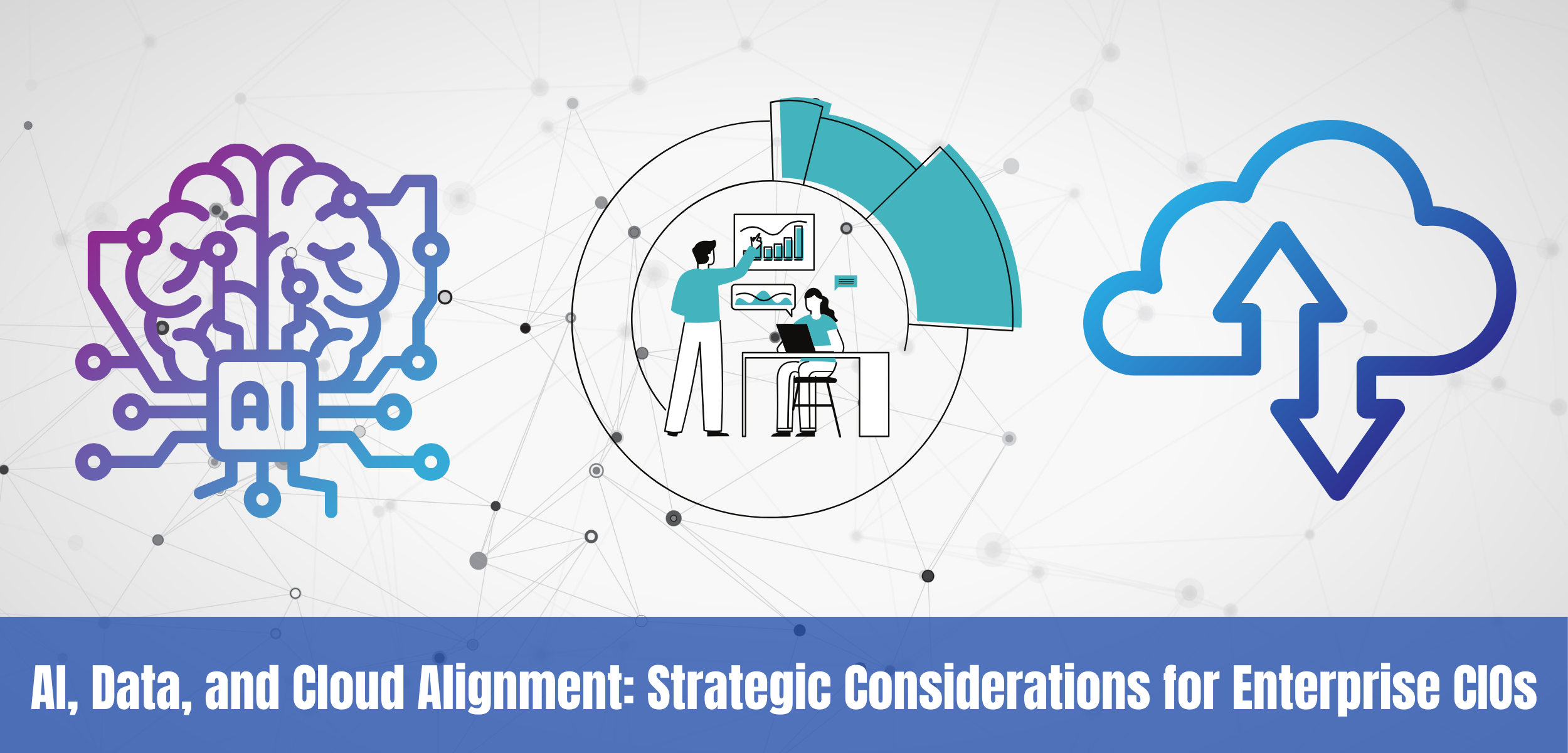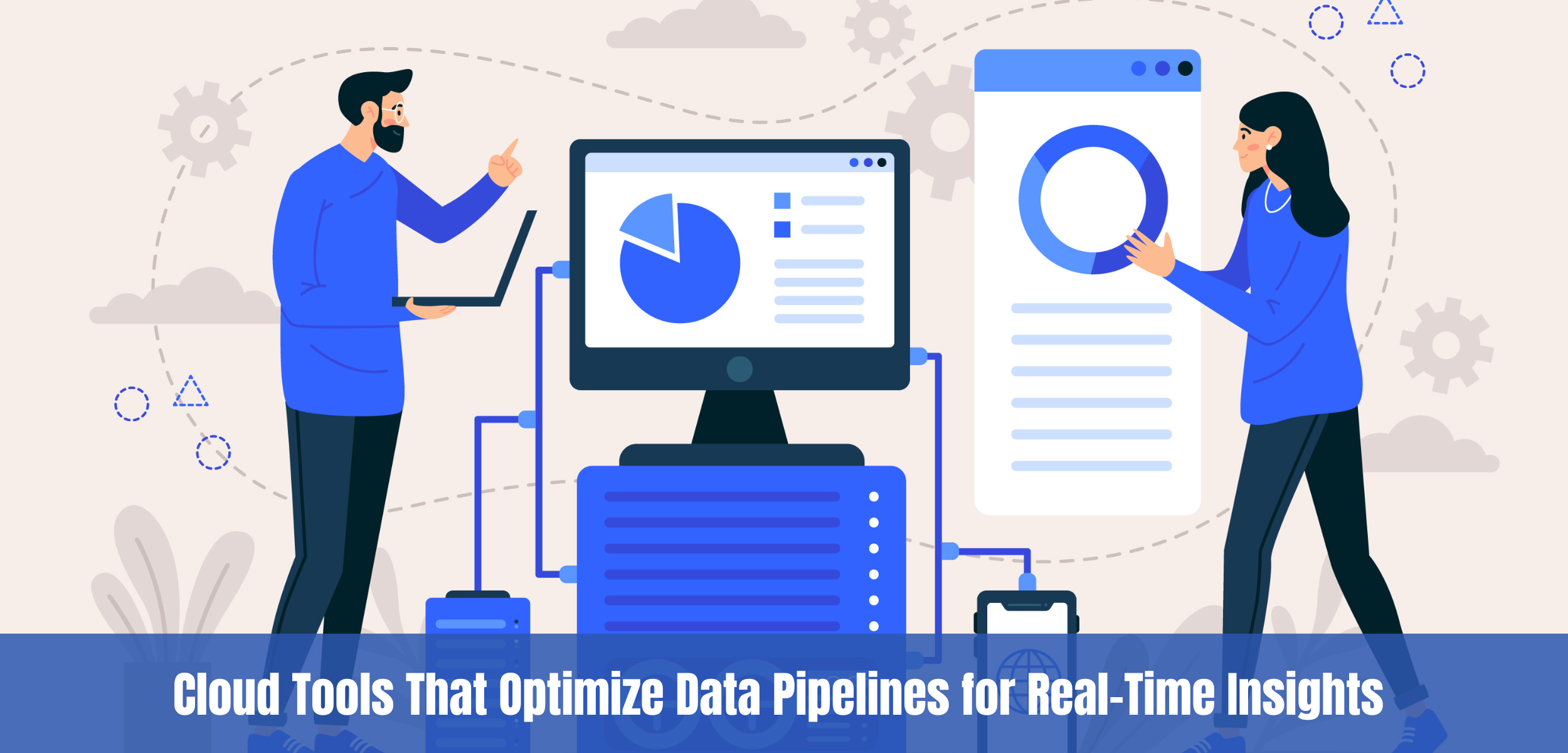As digital transformation accelerates, CIOs face the critical challenge of selecting a cloud provider that aligns with enterprise goals. While AWS, Azure, and GCP dominate the cloud landscape, each platform offers nuanced features and architectural distinctions. This guide offers a deep dive into their capabilities through a feature-by-feature lens, helping CIOs make informed, strategic decisions.
1. Overview: AWS, Azure, and GCP
- Amazon Web Services (AWS): Launched in 2006, AWS is the most mature and widely adopted cloud platform, offering an expansive suite of services across compute, storage, networking, AI, IoT, and enterprise applications. Known for its extensive global infrastructure, rich ecosystem, and innovation pace, AWS is often the default choice for startups and Fortune 500s alike.
- Microsoft Azure: Azure emerged as a strong cloud player by leveraging Microsoft's enterprise relationships and software ecosystem. Deeply integrated with products like Windows Server, Active Directory, and Office 365, Azure excels in hybrid scenarios and is the go-to platform for organizations already embedded in the Microsoft stack.
- Google Cloud Platform (GCP): Google’s cloud offerings are grounded in their data and AI expertise. While relatively newer compared to AWS and Azure, GCP has carved a niche in analytics, Kubernetes-based container orchestration, and developer-centric tooling. Its engineering-centric philosophy appeals to organizations with cutting-edge data science and application development needs.
2. Compute Capabilities
The foundation of any cloud strategy begins with compute services. All three hyperscalers offer flexible compute options, but differ significantly in architecture, scaling logic, and HPC readiness.
- AWS EC2: Supports over 500 instance types across families (M, C, T, G, P). Backed by the Nitro hypervisor for performance isolation and security. Includes support for Graviton2/3 custom silicon for cost and energy efficiency.
- Azure VMs: Organized into series such as Dv5 (general), Esv5 (memory-optimized), and HBv3 (HPC). Azure's Gen2 VMs offer features like UEFI boot and larger disk support.
- GCP Compute Engine: Offers predefined and custom VM types. Live migration for VMs and automatic sustained-use discounts are unique to GCP.
For HPC workloads:
- AWS provides Elastic Fabric Adapter (EFA) for low-latency inter-node communication.
- Azure offers the HB/HC series for MPI workloads.
- GCP delivers high-throughput A2 instances with NVIDIA A100s and NVLink.
3. AI/ML & Data Analytics
Cloud-native AI platforms enable rapid model deployment, training, and streaming analytics.
- AI Platforms
- SageMaker: Pipelines, JumpStart, Model Monitor.
- Azure ML: Designer, AutoML, integrated DevOps.
- Vertex AI: Unified pipeline, Feature Store, Workbench.
- Streaming & ETL
- Kinesis: Real-time analytics, video streams.
- Event Hubs + Stream Analytics: Native integration, query language support.
- Pub/Sub + Dataflow: Apache Beam model, autoscaling.
4. Storage Services
Enterprise storage needs span object, block, and file systems. Durability, latency, and cost-efficiency define the selection criteria.
- Object Storage
- AWS S3: 11 9s durability, lifecycle policies, and S3 Event Notifications.
- Azure Blob: Tiers include Hot, Cool, Archive. Supports immutability and ADLS Gen2.
- GCP Cloud Storage: Uniform and fine-grained access control, dual-region bucket capability.
- Block Storage
- AWS EBS: gp3 and io2 volumes, up to 64,000 IOPS.
- Azure Managed Disks: Premium, Standard SSD, and Ultra Disk with latency under 1 ms.
- GCP Persistent Disk: Offers both standard and SSD-backed disks with snapshot support.
- File Storage
- Amazon EFS: Serverless scale, NFS support.
- Azure Files: SMB and NFS support with ZRS redundancy.
- Google Filestore: Ideal for latency-sensitive file workloads.
5. Networking & Global Infrastructure
Cloud-native networking determines performance, security, and regional reach.
- Virtual Networking
- AWS VPC: Subnet-level routing, NAT gateways, security groups.
- Azure VNet: Integrated with ExpressRoute and NSGs.
- GCP VPC: Global VPCs, Shared VPCs, granular IAM for networking.
- Private Connectivity
- AWS Direct Connect: MACsec encryption, multi-gigabit throughput.
- Azure ExpressRoute: Offers Layer 2/3, SLA-backed, dual path redundancy.
- GCP Interconnect: VLAN attachments, high-throughput options.
- Content Delivery
- CloudFront: Edge caching with Lambda@Edge support.
- Azure CDN: Rules engine, HTTPS custom domains.
- GCP Cloud CDN: Integrated with Cloud Load Balancing, HTTP/2 support.
6. Identity, Access & Security
Enterprise cloud security hinges on centralized IAM, encryption control, and threat visibility.
- IAM & Role Management
- AWS IAM: Fine-grained, policy-based, with permission boundaries.
- Azure AD + RBAC: Conditional Access, MFA, enterprise identity federation.
- GCP IAM: Resource-level roles, IAM Recommender, audit trails.
- Encryption & KMS
- AWS KMS: Key rotation, CMKs, hardware-backed HSMs.
- Azure Key Vault: RBAC, secret storage, managed HSM pools.
- GCP Cloud KMS: Customer-supplied and managed keys, HSM integration.
- Security Monitoring
- AWS Security Hub: Aggregates GuardDuty, Macie, and Inspector.
- Azure Defender: Unified threat detection across compute, network, DBs.
- GCP Security Command Center: Risk prioritization, misconfig detection.
7. Containerization & Serverless
Modern workloads benefit from agility in container and serverless deployments.
- Kubernetes Management
- EKS: Deep IAM integration, Bottlerocket OS.
- AKS: AAD integration, Dev Spaces.
- GKE: Autopilot mode, fleet management.
- Serverless Compute
- Lambda: Function URLs, provisioned concurrency.
- Azure Functions: Durable Functions, Event Grid triggers.
- GCP Cloud Functions: Flexible scaling, seamless API gateway integration.
- Container Registries
- ECR: Image scanning, lifecycle rules.
- Azure ACR: Geo-replication, Helm support.
- GCP Artifact Registry: Multi-format support.
8. Databases & Data Services
Data tiering, consistency, and vendor-agnostic capabilities define enterprise DB adoption.
- Relational
- RDS: Multi-AZ, Aurora, read replicas.
- Azure SQL: Hyperscale mode, elastic pools.
- Cloud SQL: Fully managed, IAM-auth integration.
- NoSQL
- DynamoDB: Low latency, global tables.
- Cosmos DB: Multi-model, five consistency levels.
- Firestore/Bigtable: Real-time sync, petabyte scale.
- Warehousing
- Redshift: AQUA acceleration, Spectrum.
- Synapse: Serverless SQL, Spark integration.
- BigQuery: Fully serverless, federated queries.
9. DevOps & Developer Ecosystem
Continuous delivery pipelines and observability tools streamline cloud-native app development.
- CI/CD
- AWS CodePipeline: Native GitHub/GitLab support.
- Azure DevOps: Boards, Pipelines, Repos.
- Cloud Build: YAML pipelines, Skaffold.
- IaC
- CloudFormation: Nested stacks, change sets.
- ARM/Bicep: Declarative, template specs.
- Deployment Manager: Native with Terraform support.
- Monitoring & Logs
- CloudWatch: Logs, metrics, Contributor Insights.
- Azure Monitor: KQL, Application Insights.
- GCP Ops Suite: Unified logs, traces, and metrics.
10. Hybrid & Multi-Cloud Readiness
Enterprise workloads are often not cloud-native or must comply with regulatory boundaries.
- Hybrid Cloud
- Outposts: Fully-managed AWS infrastructure on-premises.
- Azure Stack: Edge, Hub, HCI options.
- GCP Distributed Cloud: Edge, Hosted, Air-Gapped deployments.
- Multi-Cloud Management
- AWS Control Tower: Governance with pre-configured landing zones.
- Azure Arc: Extends policies and RBAC to other clouds.
- Anthos: Consistent Kubernetes management across GCP, AWS, Azure.
11. Cost Management
Optimizing spend is critical for long-term cloud scalability.
- Pricing Models
- AWS: Savings Plans, Spot Instances.
- Azure: Hybrid Benefit, Reserved Instances.
- GCP: Committed Use Discounts, sustained use pricing.
- Cost Tools
- AWS Budgets & Explorer: Forecasting and cost alerts.
- Azure Advisor: Optimization recommendations.
- GCP Pricing API: Quotas, cost alerts.
12. Conclusion
Each platform offers compelling strengths:
- AWS leads in breadth, tooling maturity, and ecosystem depth.
- Azure is best suited for enterprises entrenched in Microsoft environments.
- GCP excels in analytics, AI/ML, and developer-centric services.
CIOs should align cloud choices to business workloads, regulatory frameworks, and team competencies. A phased multi-cloud or hybrid model often presents the best ROI.
Need expert guidance to design and implement your cloud strategy? Evermethod Inc specializes in multi-cloud architecture, cost optimization, and DevSecOps integration tailored to enterprise needs.
Get the latest!
Get actionable strategies to empower your business and market domination
.png?width=882&height=158&name=882x158%20(1).png)

.png/preview.png?t=1721195409615)

%2013.png)


